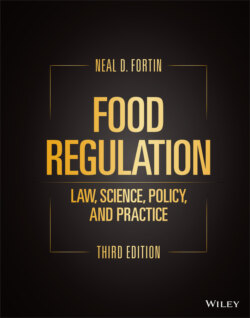Читать книгу Food Regulation - Neal D. Fortin - Страница 97
3.1 INTRODUCTION
ОглавлениеLabeling, perhaps surprisingly, has been at the center of many aspects of food regulation. Incorrect labeling consistently ranks as the leading cause of food recalls and import denials. This chapter examines food labeling regulation that is designed to protect the economic expectations of both consumers and the food industry. In Chapter 4, we will cover the regulation of the nutritional content and labeling of food. In Chapter 8, we will cover the regulation of the identification of foods in more depth, including the standards of identity requirements and the requirement for common and usual names.
The food labeling requirements designed to protect economic expectations cover both prohibitive and affirmative regulation. The prohibitive requirements protect against fraud and deception. Prevention of false and misleading statements is at the historical foundation of labeling regulation. On the other hand, the affirmative requirements mandate that food manufacturers provide information on their labels that they otherwise might not include.
The affirmative requirements are intended to provide consumers with information they need to make informed choices about the food. What information has been deemed material to informed choice is a surprisingly small set that has remained relatively stable.
This chapter provides:
1 an overview of the labeling laws,
2 the basic knowledge needed to review a label for compliance with applicable requirements,
3 knowledge of where to look up answers, and
4 identification of reference materials.
